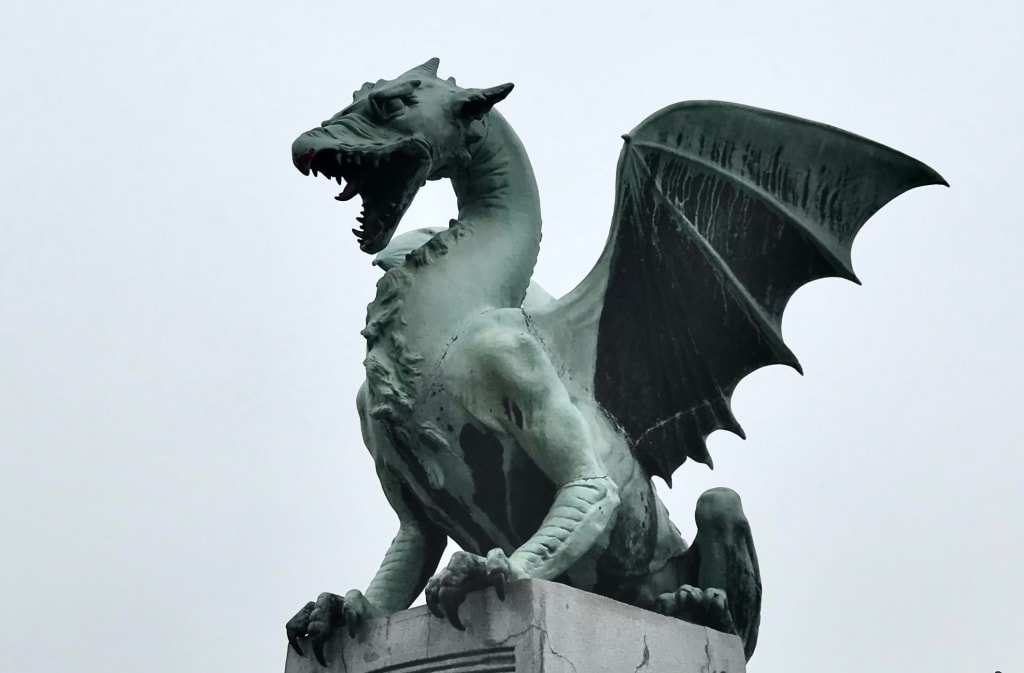Prologue
Dragons in the Valley

There weren't always dragons in the Valley. But when they arrived, people were shocked to discover that the mythical beings are not only quite real but also very different from myth. For example, dragons don’t breathe fire. They don’t breathe fire in, and they don’t breathe fire out. They fly, but feathery wings carry their feathery bodies through the air, rather than hard-paneled wings projecting a hard-shelled body.
Before I tell you the story of the dragons in the Valley, a bit of explanation is in order. First, there is evidence. This story of the dragons comes from the dragons themselves, from people familiar with events during the time of the dragons in the Valley, and from the flora and fauna that record precise bits of information about the habitat that we all share, including evidence of the dragons. We do not need to look at the rocks and fossils for long past evidence, though that too exists, just not recognized, or at least not publicly acknowledged, by scientists who study such things.
Dragons are part of the same evolution from star dust as all other life thus far discovered on planet Earth. Their absence in biology textbooks is an omission. The hard-shelled dragon of myth always reminds me of early attempts to invent an airplane by using birds as models. The English aeronautical pioneer Edward P. Frost comes to mind, rather his ornithopters of the 1870s come to mind. Such dragons reflect engineering, or computer generated imaging, or artistic license. Here the topic is dragons that exist in fact, in biology.
Dragons have historically been portrayed as pseudo-dinosaurs due to the similarity of an egg stage, size, and scaly skin. Dragons don’t lay eggs. They are large. They do not have scaly skin. Dragons have been described as pseudo-birds because of flight. They do fly. But they are not the proverbial missing link between dinosaurs and birds. Besides, some dinosaurs flew, such as the pterodactyl and the quetzalcoatlus.
The novelist J.R.R. Tolkein actually called dragons the “Great Worms” of Middle Earth. Since worms lack spines, that should have warned readers that the author, Tolkein, was being intentionally misleading in regards to dragons. Tolkein even had Bilbo Baggins tell us, “Never laugh at live dragons.” But a dragon’s sense of humor is a gift greatly appreciated by those of us lucky enough to befriend one. (Regarding Tolkein’s dragons, see http://tolkiengateway.net/wiki/Dragons/.)
The prevalence of dragons in myth is evidence of previous dragon-human encounters. The dragons forged friendships with people, and the strong bonds of friendship prompted their human friends to cover for the dragons by inventing the myths that entertained us when we were children. Here the concern is the dragons in the Valley, not the dragons in the past.
Think of all the questions that scientists have yet to answer and all the species, worlds, and dimensions yet to be discovered. Science fiction is not needed to explain dragons. Dragons didn’t ride to Earth in a spacecraft mistakenly identified at the time as a meteorite. Nor did they cross some dimensional divide, nor arise from dinosaur cells mutating in a laboratory petri dish. No such fancy is required to understand the presence of dragons in the Valley. They, the dragons, told us why they were there.
This story is fact, not fiction.
Scientists give us the classification. Tetrapoda is a superclass of animals that have four —“tetra” — limbs, pods. These animals also have a spine; they are vertebrates. Within tetrapoda, the amphibian class includes those warm-blood animals with double characters (amphi meaning two kinds); they like both land and water. The ubiquitous frogs of high school biology classes are amphibians.
The reptilia class of tetrapoda includes the prehistoric dinosaurs and the modern birds, as well as lizards, snakes, and turtles. Snakes count as a four-limbed animal because they used to have four limbs and still have the gene for arms and legs; the gene is currently turned off. The word reptile comes from a verb meaning to creep or crawl, but obviously birds fly. Most non-avian reptiles are cold-blooded animals that regulate their temperature by changing their environment; they draw heat from their environment. Birds are in the reptilia class, yet birds are warm-blooded.
The third class is mammalia, including cats, dogs, and people. Mammals are warm-blooded vertebrates with mammary glands. The females give live birth and produce milk for nursing the young of the species. In evolutionary history, mammals and reptiles diverged from a common ancestor about 300 million years.
The fact is, dragons are mammals. Think of a big, really big, bat. Remember, bats are mammals that fly. Dragons are large mammals with a corresponding large brain, ironically with the neurological density characteristic of bird brains, and birds are known to be smart animals. Dragons are smart, real smart.
The science doesn’t mean that dragons aren’t fantastic. Dragons are fantastic. Just ask one. Any dragon will tell you how fantastic they are. That’s because they are not modest. But neither are homo sapiens so who are we to judge.
Now if dragons were in the Valley (and believe me, they were!), why have you not read or heard about it in the news? The answer is simple. The people of the Valley became conservationists intent on conserving the dragons and their habit by hiding knowledge of them from the world. That’s a tribute to the dragons. It’s the first time in the history of the Valley that the people unanimously agreed on anything.
The dragons had earned such respect from the people that everyone agreed. They debated only how, not if, to shield the dragons. And that remains the case as dragons are still in the Valley. The specific valley is thus unnamed out of respect for the dragons.
If you are ready to accept the basic science that you have just read, read on. If not, perhaps natural history is not your genre. Try, maybe, fantasy.
About the Creator
Anne Millbrooke
Born in Oregon, raised on the coast of Washington, Anne went east to college — to Boise State in Idaho. Now living in Montana, she travels by camper van throughout the region.
Enjoyed the story? Support the Creator.
Subscribe for free to receive all their stories in your feed. You could also pledge your support or give them a one-off tip, letting them know you appreciate their work.






Comments
There are no comments for this story
Be the first to respond and start the conversation.